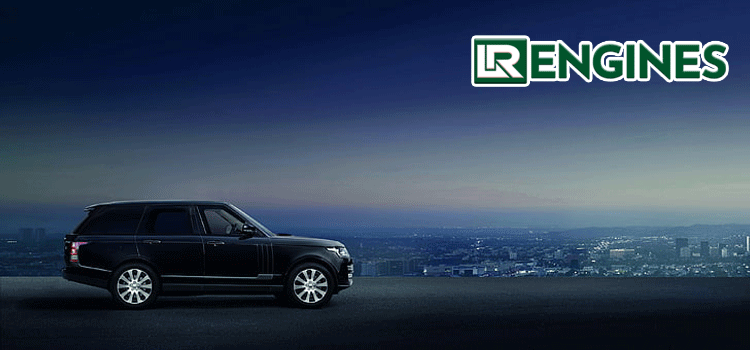What Are The Key Features Of The Range Rover 3.0 Engine’s Design?

The Range Rover 3.0 engine represents a hallmark of cutting-edge automotive engineering. As one of the latest iterations in Range Rover’s line of high-performance powertrains, this engine blends power, efficiency, and durability into a refined driving experience. Its design is tailored to meet the demands of both off-road adventures and luxury urban driving, making it one of the most versatile engines in the market. We will explore the key design features of the Range Rover 3.0 engine and examine how these features make it an outstanding choice. Whether you’re considering engine replacement or exploring reconditioned engines, understanding the mechanics behind the 3.0 engine will help you make an informed decision. This guide will also touch upon common issues, supply, and fit options.
Innovative Inline-Six Configuration
One of the most defining aspects of the Range Rover 3.0 engine is its inline-six configuration. Unlike traditional V-shaped engines, the inline-six offers a balanced distribution of weight and more efficient power output. This configuration allows for smoother performance, reduced vibrations, and a more even power delivery across the RPM range. The compactness of this design also enables the engine to fit better in the chassis, improving overall vehicle dynamics. When considering an engine replacement or reconditioned engines, the inline-six setup ensures reliability, especially for those looking for supply and fit options that complement a high-performance SUV like the Range Rover.
Mild-Hybrid Electric Vehicle (MHEV) Technology
The Range Rover 3.0 engine is equipped with Mild-Hybrid Electric Vehicle (MHEV) technology, which significantly enhances fuel efficiency while reducing emissions. The MHEV system incorporates a small electric motor that assists the engine during acceleration, capturing energy usually lost during deceleration and braking. This energy is stored in a 48-volt battery and used to boost performance, especially in stop-and-go traffic. For those considering reconditioned engines, the presence of MHEV technology adds to the environmental benefits of choosing a more eco-friendly option. When opting for supply and fit services, ensure that the system is fully integrated and functional for maximum efficiency.
Twin-Scroll Turbocharging for Enhanced Performance
Turbocharging has become synonymous with power and efficiency in modern engine design, and the Range Rover 3.0 engine does not disappoint in this regard. Its twin-scroll turbocharger delivers instant acceleration and responsiveness, particularly useful in both off-road and highway driving conditions. The twin-scroll design reduces turbo lag and enhances low-end torque, making it ideal for towing or carrying heavy loads. When thinking about engine replacement or reconditioned engines, understanding the role of turbocharging is critical. The supply and fit process must ensure that the turbocharger is perfectly aligned and functioning to maintain the high-performance standards of the original engine.
Aluminum Block for Lightweight Durability
The Range Rover 3.0 engine features an aluminum block, which plays a crucial role in reducing the overall weight of the vehicle while ensuring durability and performance. Aluminum is much lighter than traditional iron blocks, which helps improve fuel efficiency and acceleration. This lightweight material also enhances the engine’s ability to dissipate heat, reducing the risk of overheating during extended periods of use. For those opting for reconditioned engines, it’s essential to ensure that the aluminum block remains intact and free from structural issues. Choosing a reputable supply and fit provider guarantees that the reconditioned engine will deliver the same durability and efficiency as a new one.
Intelligent All-Wheel Drive Integration
Another remarkable feature of the Range Rover 3.0 engines is its seamless integration with the vehicle’s intelligent all-wheel-drive system. This integration enhances the vehicle’s off-road capabilities by distributing torque evenly across all four wheels, ensuring optimal traction even in the most challenging terrains. The engine’s responsiveness works hand-in-hand with the all-wheel-drive system to provide superior handling and control, making it a favorite among off-road enthusiasts. If you’re considering an engine replacement, it’s crucial to ensure that the supply and fit process maintains the precision integration between the 3.0 engine and the all-wheel-drive system.
Advanced Cooling System for Temperature Regulation
The Range Rover 3.0 engines is designed with an advanced cooling system that helps regulate engine temperature even under extreme conditions. The cooling system ensures that the engine maintains optimal performance levels by preventing overheating during strenuous driving, whether towing heavy loads or navigating tough off-road terrain. A well-maintained cooling system is essential for extending the engine’s lifespan and preventing costly repairs. When considering reconditioned engines, it is crucial to verify that the cooling system components are in excellent condition and functioning as intended during the supply and fit process. A faulty cooling system can lead to performance issues and reduced engine longevity.
Variable Valve Timing for Efficiency and Power
Variable Valve Timing (VVT) is another key feature of the Range Rover 3.0 engine that enhances both fuel efficiency and engine performance. VVT allows for precise control over the timing of the engine’s valves, optimizing the air-fuel mixture in the combustion chamber. This results in more efficient combustion, which translates to improved power output and better fuel economy. VVT is particularly useful in varying driving conditions, such as city traffic or high-speed highway cruising. For those looking into engine replacement or reconditioned engines, it’s important to ensure that the VVT system is fully functional. The supply and fit of the engine should guarantee that this advanced feature is not compromised.
Enhanced Fuel Injection System for Better Combustion
The Range Rover 3.0 engines is equipped with an advanced fuel injection system that ensures a precise mixture of fuel and air, leading to more efficient combustion and reduced emissions. This system optimizes engine performance by delivering the exact amount of fuel needed at the right time, improving overall fuel economy without sacrificing power. When replacing an engine or opting for reconditioned engines, it’s important to verify that the fuel injection system is properly calibrated. During the supply and fit process, ensure that the fuel system is inspected for any potential issues, as this system is critical to maintaining the engine’s efficiency and longevity.


